Unraveling Sage vs. Sagebrush
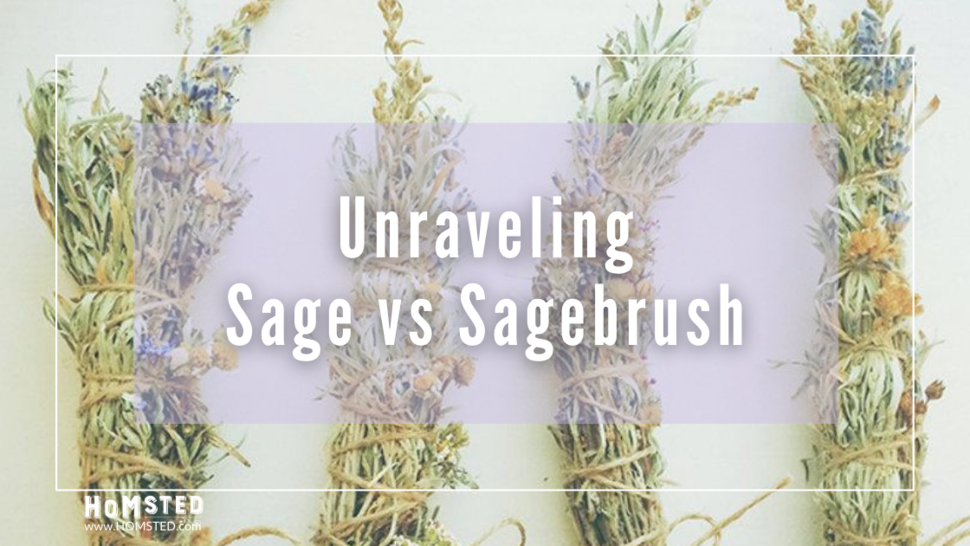
It is somewhat confusing when discussing sages as there are many types of plants, some even unrelated, that are referred to as ‘sage’. But, in reality, there are basically two types of groups that are referred to as “sage”:
(1) true sages of the Salvia genus
(2) sagebrush of the Artemisia genus
Part of the confusion stems from the similarity in both name and historical use. Both groups of plants are commonly used for smudging, an ancient practice that is now being validated by modern science as a way to cleanse and purify spaces of bacteria and other pathogens.
Salvia sages
The first group of plants is considered the real “sage” by herbalists. This group of plants belongs to the family of plants called Laminacea (or known as the mint family) and the genus of Salvia. These plants have square stems, opposite leaves and two lipped flowers. Members of the sage family include:

White sage - Salvia apiana
(Other names: California Sage, Grandfather sage, Bee Sage, Sacred Sage)- White Sage grows in a bush clump, wild across the American Southwest. Most of the White Sage on the market comes from California. The plant has been gathered for thousands of years by Native Americans, particularly the Chumash. It is known as a sacred plant—and is used in food, medicine and smudging (smudging is mostly how it is used today). When smudging white sage is used to deep cleanse a space of negative energy.
Note: for more information on the near extinction of white sage please click here
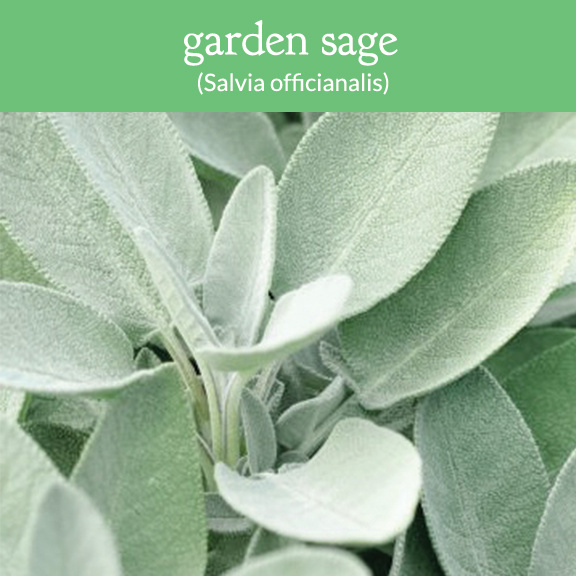
Garden sage - Salvia officianalis
(Other names: Common Sage, Green Sage, or Kitchen Sage, cooking sage, Dalmatian sage)- Common Sage is a close relative of White Sage. Common Sage originates in Europe, and has a long history for its medicinal benefits and used as a culinary herb. As herbalists we use it to soothe sore throats and rebuild stamina during a long term illness. It is also beneficial for hot flashes during menopause.

Black sage - Salvia mellifera
(Other name: honey sage) - This California coastal sage eventually becomes a dark color (especially in drought), which occurs after it blooms when stems and the flowers harden and turn black. Mostly used for smudging black sage is used to encourage visions and vivid dreams.
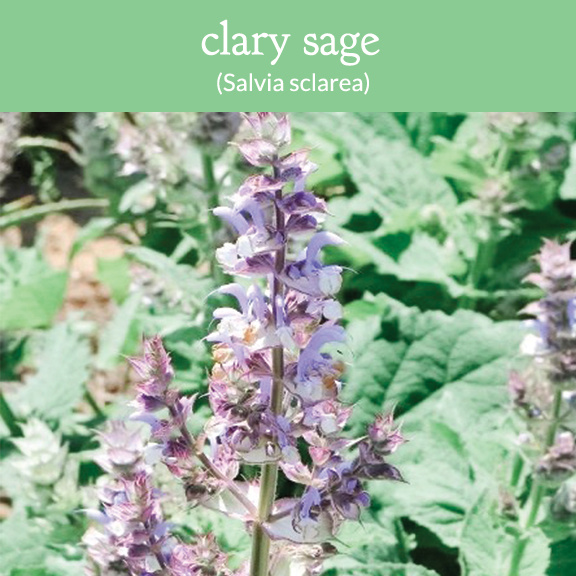
Clary sage - Salvia sclarea
(Other names: Clary, Europe Sage) Mostly this plant is used as an essential oil. Long considered a "female's oil", clary sage is calming on the body and mind, and supports emotional and feminine functions.
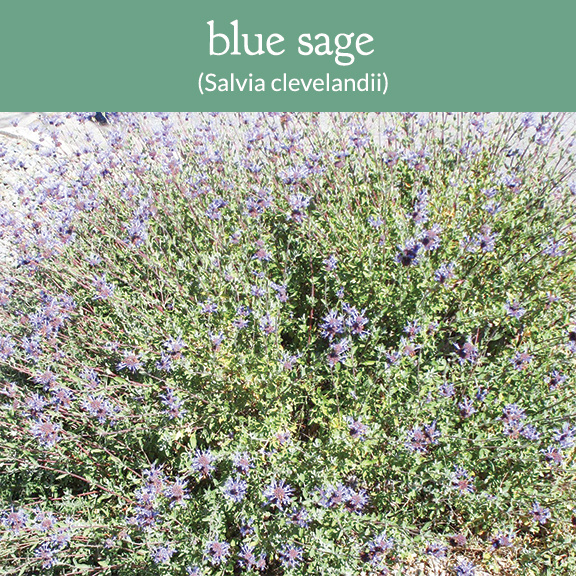
Blue sage - Salvia clevelandii
(Other names: New Mexico Sage, Desert Sage, Grandmother Sage). Blue Sage is a bush found in the deserts of the Southwest. It’s named after it’s blue flowers, but the leaves also have a blue-ish tint. A close relative of White Sage, Blue Sage is also good for healing and cleansing rituals. It has a soothing and relaxing smell that is burned as a smudge. When smudging it is used to welcome money, wealth, health, healing and is cooling.
Note: Sagebrush Artemisia tridentata, also can go by the name "Blue Sage," but is not a member of the Salvia genus.
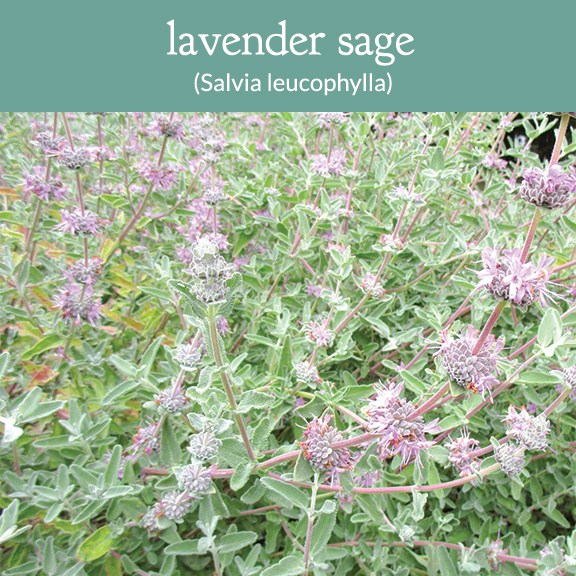
Lavender sage - Salvia leucophylla
(Other names: Gray Sage, Purple Sage, Wild Lavender). Lavender Sage is another sun-loving plant that grows in southern coastal California. Unrelated to the flower Lavender (Lavandula angustifolia). However, it resembles Lavender (when in bloom) and has a similar flowery fragrance. Similar to Lavender, Lavender Sage is known for its calming, and relaxing effects.
Artemisia sages
The second group is in the genus of Artemisia and the family of Asteraceae. They are a group of plants called sagebrush and grow throughout the world. There are about 300 different types of Artemisias. These plants have woody stems and are bushes (shrubs) with often irregularly shaped leaves. Member include:

Desert sagebrush - Artemisia tridentata
(Other names: Sagebrush, Desert sage, Desert sagebrush, Desert magic, Mountain sage, Grey sage, New Mexico sage, Sagebrush smudge, Big sage, Great Basin sagebrush). This aromatic shrub thrives in drier areas of the mountainous West. It has skinny, branched leaves with three lobes. This plant has a warm herbaceous aroma that it slightly peppery. It is used as a smudge for cleansing and purifying, protection, and inner strength. It is said to bring pleasant thoughts and relieve headaches and anxiety. This plant is used interchangeably with Artemisia californica.
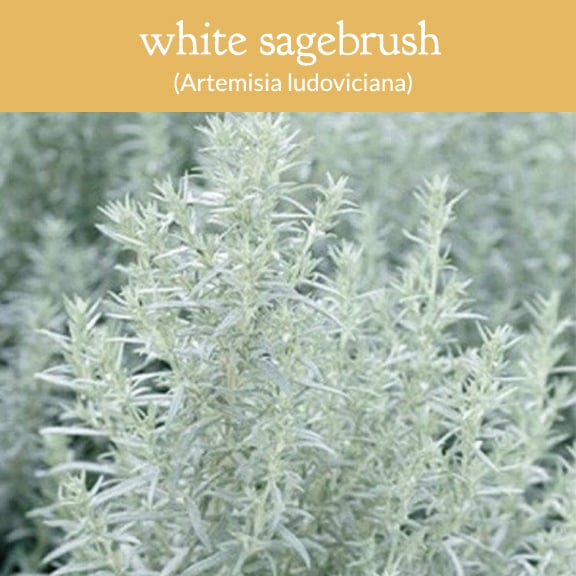
White sagebrush - Artemisia ludoviciana
(Other names: Dakota sage, Man sage, Grandfather sage, Badlands Sage, Silver wormwood, Old man sage, Silver king, Western mugwort) Another Artemisia smudge, this one grows all over the badlands of South Dakota and out west and down south to Louisiana. The aroma and appearance of Dakota Sage is very similar to that of Desert Sage (Artemisia tridentada). However, the fragrance is usually less intense.

Black sagebrush / Mugwort - Artemisia vulgaris
(Other names: Black sage, Mugwort, Cronewort, Wild wormwood, Chrysanthemum weed, Artemis, Old Uncle Henry, St. John’s plant) This plant grows all over Europe, Asia, Africa, and the US. A cup mugwort tea is excellent to help with gas, flatulence, stomach acid, bile production, and overall digestion.
What is your favorite “sage or sagebrush”? Let us know in the comments below!
Disclaimer: This information is intended only as a general reference for further exploration, and is not a replacement for professional health advice. This content does not provide dosage information, format recommendations, toxicity levels, or possible interactions with prescription drugs. Accordingly, this information should be used only under the direct supervision of a qualified health practitioner. Reliance on any information provided by this article is solely at your own risk. And, of course, never eat a wild plant without first checking with a local expert.



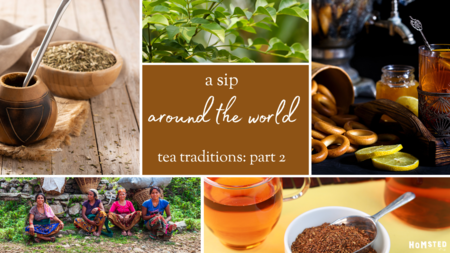

Comments
the different sages. Thanks for sharing. So love Homsted!